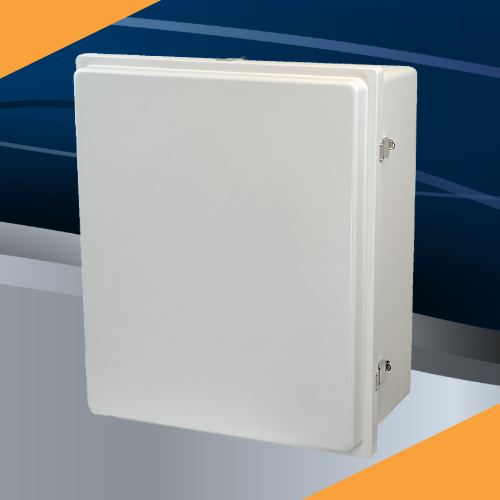
Any construction project has to run wiring at some point, and the devices connected to those wires need electrical enclosures.
When you shop for different options, you’ll find that most enclosures fall into two categories: metallic and non-metallic.
Which should you choose? It depends on the applications, but a quick look at the pros and cons of each can help you decide.
Metallic
There are a few different types of metals that go into enclosures. The most common are treated steel and aluminum. Galvanized steel is the typical choice for outdoor metal enclosures. Aluminum is more common when you need a lighter enclosure or if you need increased corrosion resistance.
In any case, comparing metallic enclosures to non-metal enclosures nets you the same list of pros and cons.
Pros
Arguably, the most compelling reason to use metallic enclosures is for the raw strength they offer. Metals are tough and durable, and they can withstand fairly extreme environments.
On top of that, metal enclosures offer grounding options for your devices, in the case that you need grounding run through the enclosure.
Cons
On the downside, metal corrodes. Even treated metals will eventually rust in outdoor scenarios.
When rust isn’t an issue, there’s still a concern that metal conducts heat very well. If a device runs too hot, metal is not as good at insulating that heat as other enclosure materials.
Beyond that, metal enclosures are harder to customize. When you need to alter the shape of an enclosure or punch a hole, it takes more time, effort, and specialized tools to get the job done. This can raise installation costs.
Lastly, metal enclosures can create grounds where you don’t want them.
Non-Metallic
Most non-metal enclosures are made of fiberglass or polycarbonate. Among these materials, there are varying pros and cons, but in most ways, they offer similar performance. Fiberglass is better for outdoor applications, and polycarbonate usually costs less. Either way, you can expect the following pros and cons for both materials when you compare them to metals.
Pros
Non-metallic enclosures are usually cheaper per unit. That alone is quite compelling, but they offer a few more benefits.
Obviously, non-metals are much more resistant to corrosion. Especially for outdoor use, you don’t have to worry about water or moisture rusting out your non-metal enclosures.
As fiberglass and polycarbonate are softer materials than metals, they’re also easier to customize. You can cut, shave, and punch them as needed, making customized installations easier and cheaper.
By that same token, it’s also easier for manufacturers and fabricators to make custom designs out of non-metal enclosures. If you need such a design, non-metal materials typically provide additional savings.
Cons
The primary reason that metal enclosures still exist goes back to raw durability. Some environments require enclosures that can take a beating, and non-metals are more vulnerable to physical damage.
It’s worth noting that running grounds directly through non-metal enclosures is more challenging (although not impossible).
Perhaps most importantly, non-metal enclosures don’t offer EMF shielding for communication devices. You can add such shielding to non-metal enclosures, but that incurs an additional cost and more installation effort. Many metal enclosures naturally provide such shielding.
Overall, non-metal enclosures have risen in popularity because of what they offer. If you don’t need specific benefits tied to metal enclosures, non-metal is almost always the superior choice.
https://alliedmoulded.com/wp-content/uploads/Fiberglass-vs-Steel-Enclosures.pdf
